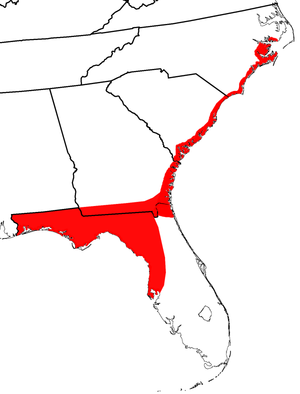Deptford
The Deptford culture was a pre-Columbian Native American group that occupied what is now the Southeastern United States during the early Woodland period. The name "Deptford" is derived from the area south of Savannah, Georgia.
In 1985 a UWF archaeological team led by Judy Bense excavated a property in the Hawkshaw neighborhood (now the site of the Gulf Power building) and discovered evidence of a Deptford occupation from about 150 CE. Among the findings were hundreds of trash pits that had not mixed with remains from other time periods, yielding food remains and other debris that provide a very clear picture of how the Deptford culture lived.
It is believed, due to the types of fish bones discovered in the trash pits, that the Deptford people used small-mesh seine nets to catch schools of pinfish and mullet in shallow waters. The presence of acorns, hickory nuts and antlered deer skulls suggests the Deptford group occupied the Hawkshaw area in summer and fall seasons. In addition to large, deep cooking pots, archaeologists discovered fragment of pottery that were likely traded from the Lower Mississippi Valley, based on the decorations found on them.[1]
ReferencesEdit
- Deptford culture at Wikipedia
- ↑ Guy E. Gibbon and Kenneth M. Ames, editors. Archaeology of Prehistoric Native America. Taylor & Francis, 1998.
